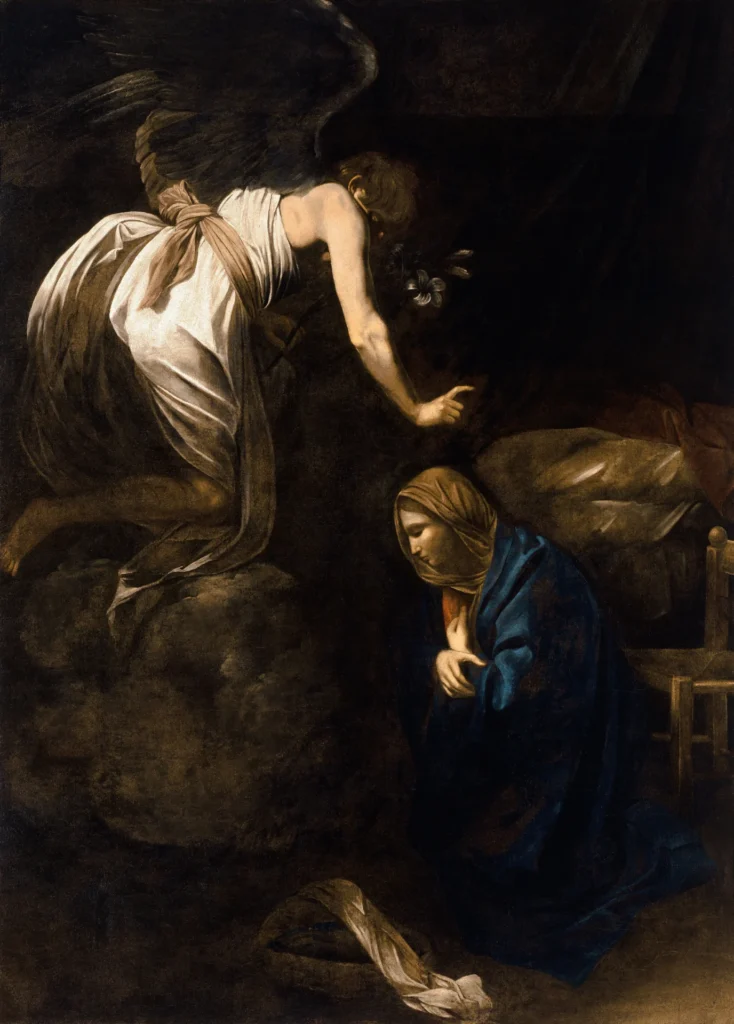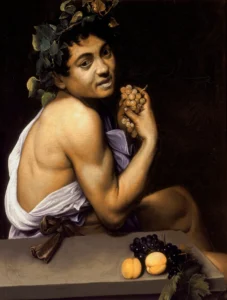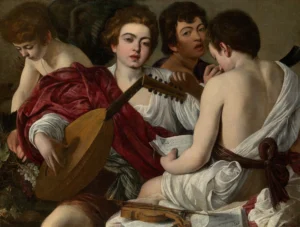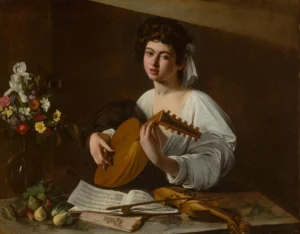The Annunciation (1608-1609)
The Annunciation depicts a poignant moment between the Virgin Mary and the angel Gabriel, demonstrating Caravaggio's masterful use of light and shadow. Created around 1608-1609, the painting encapsulates the tension and emotional gravitas of the Biblical announcement, with serene yet dramatic contrasts captured in the figures' expressions and poses. Gabriel, presented on a cloud with symbolic lilies, underscores Mary's conflicted response to her divine calling, inviting viewers to reflect on themes of destiny and acceptance. This late work signifies Caravaggio's adeptness at portraying nuanced human experiences within religious themes.
Year 1608 - 1609
About the Artwork
This painting is a vibrant reminiscence of the moment when the angel Gabriel visits the Virgin Mary to announce that she will bear the Son of God. Housed in the Musée des Beaux-Arts de Nancy, it carries significant history as it was gifted by Henry II, Duke of Lorraine, possibly as early as 1609, to the primatial church in Nancy. Caravaggio's innovative approach to light and composition blurs the lines between the divine and the earthly, adding a layer of psychological complexity to this religious narrative. Despite damages sustained over the years, the artwork remains a testament to Caravaggio's genius and his ability to infuse his subjects with a palpable sense of emotional depth.
Did You Know
Liked what you see? Add it to your collection.
Enjoyed reading? Share it.
... continued
Location and History
The painting is housed at the Musée des Beaux-Arts de Nancy in Nancy, France. It was given by Henry II, Duke of Lorraine, to the newly founded primatial church in Nancy, possibly as early as 1609 when the church was provisionally opened to the public
Composition and Style
The painting depicts two main figures: the Virgin Mary and the angel Gabriel. Gabriel is shown floating on a cloud, holding lilies which symbolize the Virgin. The Virgin is in a prostrate position, reflecting her reaction to the announcement. The work exhibits Caravaggio's characteristic use of sfumato and tenebrism, with most of the painting in darkness except for the two main figures
Artistic Technique
The painting showcases an advanced Baroque treatment of space, with the angel appearing to protrude outside the picture plane, creating an illusionistic effect. This technique is more pronounced than in Caravaggio's earlier works, such as seen in the head of Goliath in the Borghese David
Condition and Attribution
The painting has undergone significant damage and retouching over the years. Despite this, the angel's figure is still attributed to Caravaggio's brushwork, particularly notable for its energetic pose. The loose and summary handling of the painting is consistent with Caravaggio's late manner
Interpretation
The painting conveys a dramatic and psychologically effective contrast between the energetic pose of Gabriel and the calm, yet seemingly crushed, receptivity of the Virgin. The Virgin's self-absorption and lack of joyous acceptance suggest an existential sadness and a sense of the weight of her future role
Dimensions
The painting measures 285 cm by 205 cm (112 inches by 81 inches)
Overall, The Annunciation is a late work by Caravaggio that highlights his innovative use of light and space, as well as his ability to convey deep emotional and psychological depth in his subjects.










